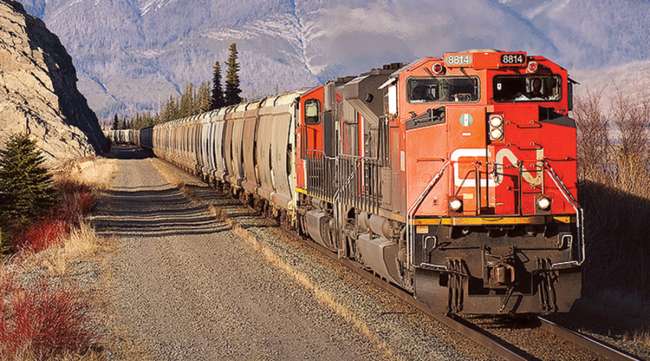Senior Reporter
Canadian National Q2 Earnings Squeezed by Pandemic

[Stay on top of transportation news: Get TTNews in your inbox.]
Canadian National Railway is the latest Class I railroad to feel the impact of the COVID-19 pandemic.
The Montreal-based railroad on July 21 reported second-quarter net income of C$545 million or 77 cents per share, a 60% drop compared with C$1.36 billion or $1.89 a share in the same period a year ago.
Quarterly revenue also dropped, 18.9% to C$3.2 billion, compared with C$3.95 billion in the spring of 2019.
The railroad’s operating ratio slumped to 75.5 from 57.5 last year.
Operating ratio, or operating expenses as a percentage of revenue, is a key industry metric used to measure efficiency. The lower the ratio, the greater the company’s ability to generate profit.

Ruest
“By being adaptable, we were able to swiftly rightsize our resources and continue to provide our essential transportation services to our customers, the economy, and the communities we serve,” CEO JJ Ruest said. “I could not be prouder of our railroaders as they never stopped working to keep our customers’ goods and the North American economy moving safely and efficiently throughout this pandemic. The decisive actions we took early on in March, well before the pandemic impacted the North American economy, allowed us to deliver over C$1 billion of free cash flow during this recessionary quarter.”
The railroad shed 5,103 employees or 18.7% of its workforce, finishing the quarter with 22,112 workers compared with 27,215 during the same period last year.
The railroad said revenue declined in six of its seven areas that it measures, with revenue from the automotive sector dropping 72%. Revenue from metals and minerals fell 30%. It was down 25% in petroleum and chemicals, it dropped 21% in coal, 17% in forest products and 13% in its intermodal sector. The grain and fertilizers sector was up 1% when compared with 2019.
Want more news? Listen to today's daily briefing:
Subscribe: Apple Podcasts | Spotify | Amazon Alexa | Google Assistant | More




